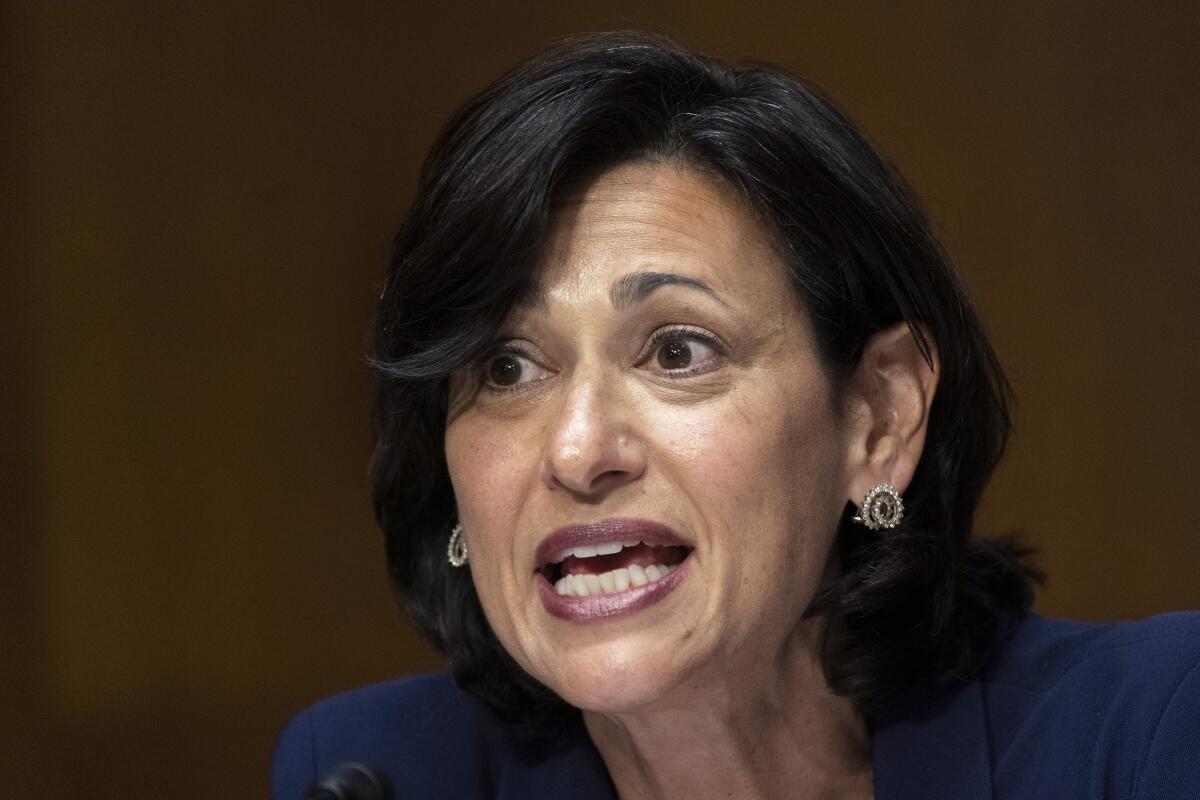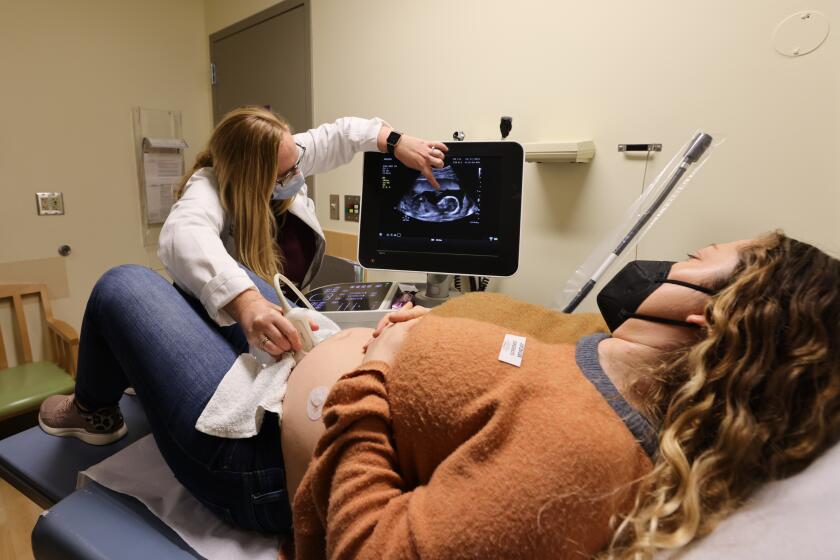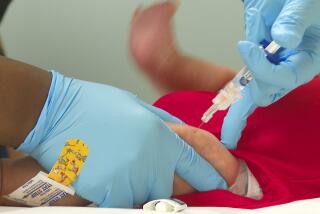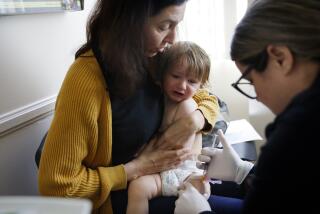COVID-19 hospitalizations are rising in infants under 6 months, CDC director says

COVID-19 hospitalizations are rising among babies under 6 months old, and the Centers for Disease Control and Prevention is urging mothers to get vaccinated to reduce the risk of infection in those not yet eligible for shots, the agency’s director said.
In recent months, children younger than 6 months old have faced the second-highest rate of hospitalization across all age groups, trailing only behind those of senior citizens, Dr. Rochelle Walensky said last week.
Since the Omicron variant took off in the U.S. in December, hospitalization rates of children too young to be vaccinated rose faster than those of older age groups. The first COVID-19 vaccines for infants, toddlers and preschoolers became available in June, but there’s still no vaccine for infants younger than 6 months.
“We’re seeing more and more of those younger babies getting hospitalized,” Walensky said. “That’s really where we’re trying to do some work now because we think we can prevent those by getting mom vaccinated.”
A report published Thursday in the CDC’s Morbidity and Mortality Weekly Report said that for most of the past year, infants under 6 months have had higher COVID-19 hospitalization rates than older children or adults ages 18 to 64. In recent months, the hospitalization rate for the youngest infants even exceeded that of seniors 65 to 74.
Between Dec. 19 and Aug. 31, the number of children under 6 months admitted to hospitals with COVID-19 ranged from a low of 2.2 per 100,000 in early April to a high of 26 per 100,000 in mid-July, according to the report. Over the entire period, the average number of weekly hospitalizations was 13.7 per 100,000 — just slightly below the average rate for adults 65 to 74 (13.8 per 100,000).
For seniors 75 and older, the COVID-19 hospitalizations rate was 39.4 admissions per 100,000, said the report, which was based on data from hospitals in 13 states.
A long-standing tradition of keeping pregnant women out of clinical trials is having serious consequences with regard to COVID-19.
The CDC is preparing to encourage pregnant people to receive the new bivalent booster shots that target the highly infectious Omicron subvariant known as BA.5, which was the dominant coronavirus strain in the U.S. until last month.
“We know that those antibodies will transfer to the baby,” Walensky said. “It’ll actually help protect the infant.”
One study showed that when pregnant women had two doses of an mRNA COVID-19 vaccine, the kind made by Pfizer Inc. and Moderna Inc., there was a reduction in the risk of hospitalization for COVID-19 among babies under 6 months of age.
Uptake of Pfizer and Moderna’s bivalent shots has been strikingly low among adults so far, with only about 5% of those between the ages of 24 and 49 having received the new boosters, Walensky said. The CDC will seek to reinvigorate the effort to vaccinate all eligible children 6 months and older.
“We have seen relatively low vaccination rates in our 6 months to 5-year-olds, even our 5-to-11 and our 12- to 17-year-olds,” she said. “One of the most important things that you can do is to get your children vaccinated.”
COVID-19 isn’t the only threat young children face this fall and winter. U.S. health-systems and children’s hospitals are currently grappling with a wave of respiratory viruses, including influenza and respiratory syncytial virus, or RSV.
With Orange County declaring a health emergency due to high RSV cases, concern about the virus is peaking. Here’s what you should know about it.
“We are right now seeing a lot of RSV earlier in the season than we normally would and probably more hospitalizations related to the fact that there were several years’ worth of children who didn’t get that exposure,” Walensky said.
Though RSV immunizations haven’t yet been approved by regulators, a recent study from Pfizer, which has an experimental candidate in development, suggests that vaccinating pregnant people against RSV can protect their newborns from infection.
Until an RSV shot is available, Walensky said, masking and improving indoor ventilation will help prevent the spread of disease among children. Already in the Southeast, the CDC is seeing RSV-related hospitalizations begin to decline.
The latest COVID-19, RSV and influenza strains that caused an early surge in pediatric cases don’t appear to result in more severe disease, Walensky said. The wave of infections is more likely a reflection of children’s naive immune systems after years of masking and social distancing due to the pandemic, she said.
Times staff writer Karen Kaplan contributed to this report.








